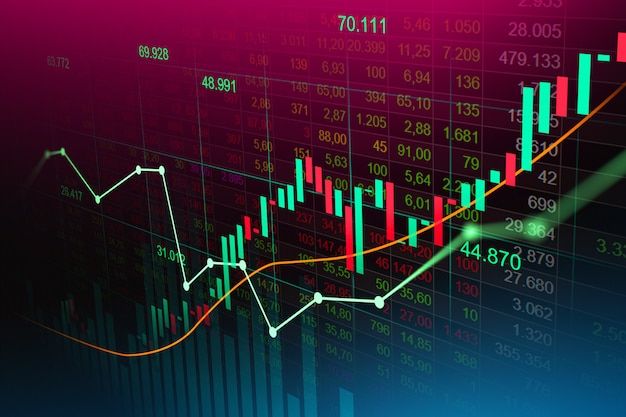
Day trading in the forex market requires quick decisions and accurate analysis. While some traders prefer price action trading, many rely on technical indicators to confirm trade setups and improve accuracy.
But with so many indicators available on MetaTrader 4 (MT4), MetaTrader 5 (MT5), and TradingView, which ones actually work?
In this guide, we’ll cover the best forex indicators for day trading, how they work, and how to combine them for maximum efficiency.
What Are Forex Indicators?
Forex indicators are mathematical calculations applied to price, volume, or open interest data to help traders predict future price movements.
They are categorized into:
✅ Trend indicators – Identify the overall market direction
✅ Momentum indicators – Measure the strength of price movements
✅ Volatility indicators – Show the rate of price change
✅ Volume indicators – Analyze trading volume and liquidity
Top Forex Indicators for Day Trading
1. Moving Average (MA) – Best for Identifying Trends
📌 Type: Trend Indicator
📌 Best for: Identifying the market trend and dynamic support/resistance
A Moving Average (MA) smooths price action and helps traders determine the trend direction.
🔹 How to Use It:
- A 50-period MA above a 200-period MA signals an uptrend
- A 50-period MA below a 200-period MA signals a downtrend
🔹 Best Currency Pairs: Works well on EUR/USD, GBP/USD, XAU/USD, and other major pairs
2. Relative Strength Index (RSI) – Best for Spotting Overbought & Oversold Conditions
📌 Type: Momentum Indicator
📌 Best for: Identifying potential reversals and trend strength
The RSI (Relative Strength Index) measures momentum and helps traders spot overbought and oversold market conditions.
🔹 How to Use It:
- RSI above 70 = Overbought (Possible Sell Opportunity)
- RSI below 30 = Oversold (Possible Buy Opportunity)
🔹 Best Currency Pairs: EUR/USD, GBP/USD, XAU/USD, USD/JPY
3. Bollinger Bands – Best for Measuring Volatility
📌 Type: Volatility Indicator
📌 Best for: Identifying breakout opportunities and overbought/oversold conditions
Bollinger Bands consist of a middle moving average line and two outer bands. The bands expand and contract based on market volatility.
🔹 How to Use It:
- Narrow bands indicate low volatility (breakout likely coming)
- Wide bands indicate high volatility (potential trend continuation)
🔹 Best Currency Pairs: Works well with EUR/USD, XAU/USD, GBP/USD, and other trending pairs
4. MACD (Moving Average Convergence Divergence) – Best for Confirming Trend Direction
📌 Type: Trend & Momentum Indicator
📌 Best for: Identifying trend direction and strength
The MACD consists of two lines (MACD line & Signal line) and a histogram that shows trend momentum.
🔹 How to Use It:
- When the MACD line crosses above the signal line → Buy signal
- When the MACD line crosses below the signal line → Sell signal
🔹 Best Currency Pairs: EUR/USD, GBP/USD, USD/JPY, XAU/USD
5. Fibonacci Retracement – Best for Identifying Key Levels
📌 Type: Support & Resistance Indicator
📌 Best for: Identifying retracement levels in trending markets
Fibonacci retracement levels (23.6%, 38.2%, 50%, 61.8%, and 78.6%) help traders find potential support and resistance zones.
🔹 How to Use It:
- In an uptrend, look for buying opportunities at Fibonacci support levels
- In a downtrend, look for selling opportunities at Fibonacci resistance levels
🔹 Best Currency Pairs: Works on all forex pairs, especially trending markets
How to Combine Forex Indicators for Maximum Accuracy
🔹 Best Combination for Trend Trading:
✅ Moving Averages + MACD → Confirms trend direction
🔹 Best Combination for Reversals:
✅ RSI + Bollinger Bands → Identifies overbought/oversold conditions
🔹 Best Combination for Breakouts:
✅ Bollinger Bands + Fibonacci Retracement → Finds breakout zones
🚀 Pro Tip: Never rely on one indicator alone. Always combine multiple indicators for better accuracy.
Conclusion
Forex indicators can help you identify trends, confirm breakouts, and manage risks. The key is to use the right combination of indicators based on your trading strategy.
📌 Need help finding high-probability trade setups?






